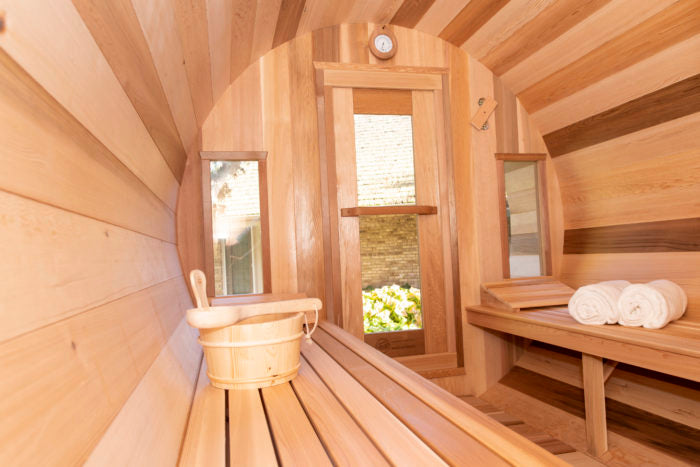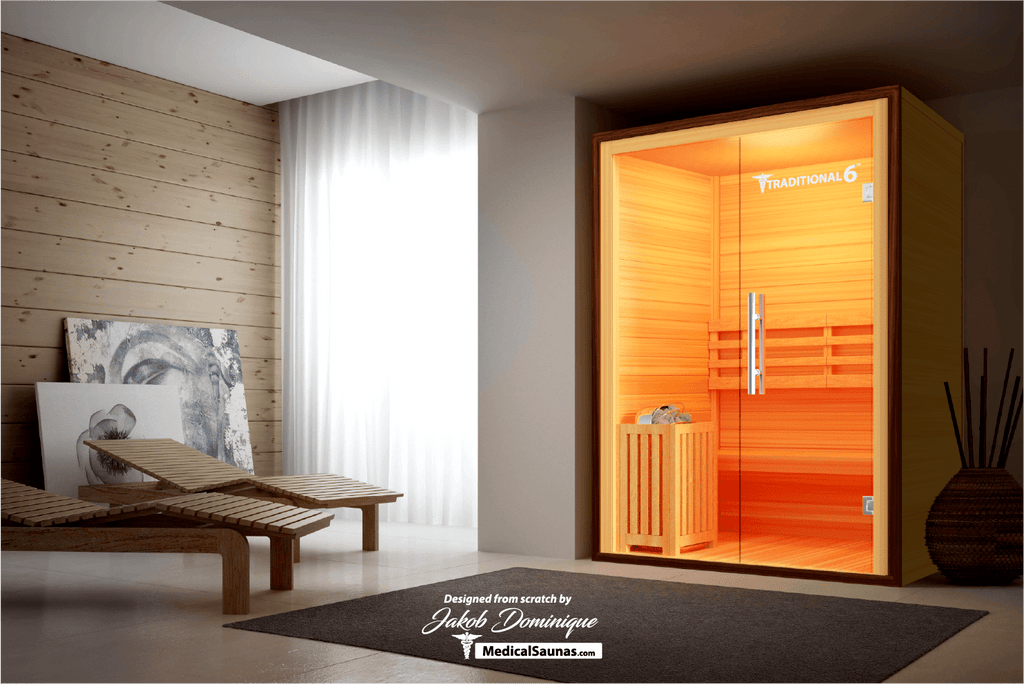Indicators on Traditional Sauna You Should Know
Indicators on Traditional Sauna You Should Know
Blog Article
The 25-Second Trick For Traditional Sauna
Table of ContentsRumored Buzz on Traditional SaunaTraditional Sauna - The FactsTraditional Sauna - An OverviewTraditional Sauna Fundamentals ExplainedTraditional Sauna Can Be Fun For Everyone
Most of the weight shed in a sauna is water loss and is re-gained upon rehydrating. Nonetheless, undeniably sauna can be an essential component of a healthy and balanced weight-loss program. To look at the distinctions in between conventional and IR saunas, I will certainly divide these into verifiable, theoretical, and produced differences.Therefore, the most popular factor in the saunawhich is at the ceiling directly above the sauna heateris generally in between 185 and 190 F. Claims that a standard sauna exceeds 200 F is merely not true and not relevant for electrical saunas marketed in the US. The temperature level for a far-infrared sauna is normally set in between 120 and 140 F; however, unlike the typical sauna, the goal in and IR area is not to achieve a heat.
Because of this, the temperature level difference is virtually pointless, since extreme sweating causes both sauna types, yet the technique of warming the body is various. In an IR sauna the bather will feel hot and will sweat a lot, yet at much lower temperature levels (Traditional Sauna). Therefore, if the goal is to invest longer time periods in the sauna, the IR sauna is a good selection
When a conventional sauna has actually been correctly heated up, the sauna wall surfaces are cozy, the air temperature has actually accomplished established temperature and the rocks are incredibly heated. As an interesting side note, the warmed walls and the rocks are giving off far-infrared warmth, incorporated with the heated air, to produce an "wrapping up heat".
More About Traditional Sauna

When the heat is accomplished, the components cycle on and off to keep the heat. Most standard sauna individuals take pleasure in putting water over the rocks to produce heavy steam to increase sauna moisture degrees. The advantages of pouring water over the rocks include: making the area a lot more comfortable, dampening the nasal flows, and enabling the use of aromatherapy by blending essential oils with the water.

When the energy enters the body, it creates the body temperature to raise and eventually results see this website in sweat. In an infrared sauna it is essential for the emitters/heaters to remain on virtually regularly. Because there is no mass of rocks to retain warmth, the sauna will cool down if the emitters shut off.
As pointed out above, the sauna bather in an infrared area intends to position himself before operating emitters to obtain maximum gain from the warm. The heating time for the two spaces can be very various, depending upon just how the areas are used. For a traditional sauna, a bather ought to permit 30-40 minutes for the area to attain a preferred temperature level and to effectively pre-heat the rocks.
7 Easy Facts About Traditional Sauna Described
A well built sauna will typically accomplish a temperature level of 150-160 F in about 30-40 mins. For hotter temperature levels, the room may require to heat for a longer period.

Traditional saunas often tend to be larger (thus make use of even more electrical power) than infrared saunas, although standard saunas are absolutely readily available in one and 2 individual sizes. For a two-person typical sauna, 5x6 or 5x7 size is most preferred. The top bench can pleasantly seat two or 3 people and is additionally long enough to rest during the sauna session.
The smart Trick of Traditional Sauna That Nobody is Talking About
The average cost per kWH of electrical energy in the U.S. is roughly $0.11, so a 4.5 kW heating unit will certainly set you back about $.50 to compete one hour, if the heater runs continuously for one hour. Generally a sauna heating unit will certainly compete 75% of the first hour and 50% of subsequent hours on because the aspects cycle once the set temperature is accomplished.

There is a seldom discussed distinction in the social experience between the 2 spaces. While our culture has actually lost some of the social advantage of the standard sauna experience, it you could try here can be extremely socially rewarding (Traditional Sauna). From family members time in the sauna, to heart-felt discussions with better halves, to sauna partiesthe conventional sauna experience can lead to intimate socializing
Not known Facts About Traditional Sauna
The majority of greater end infrared rooms include tinted light therapy, sound systems and full-glass fronts.
Report this page